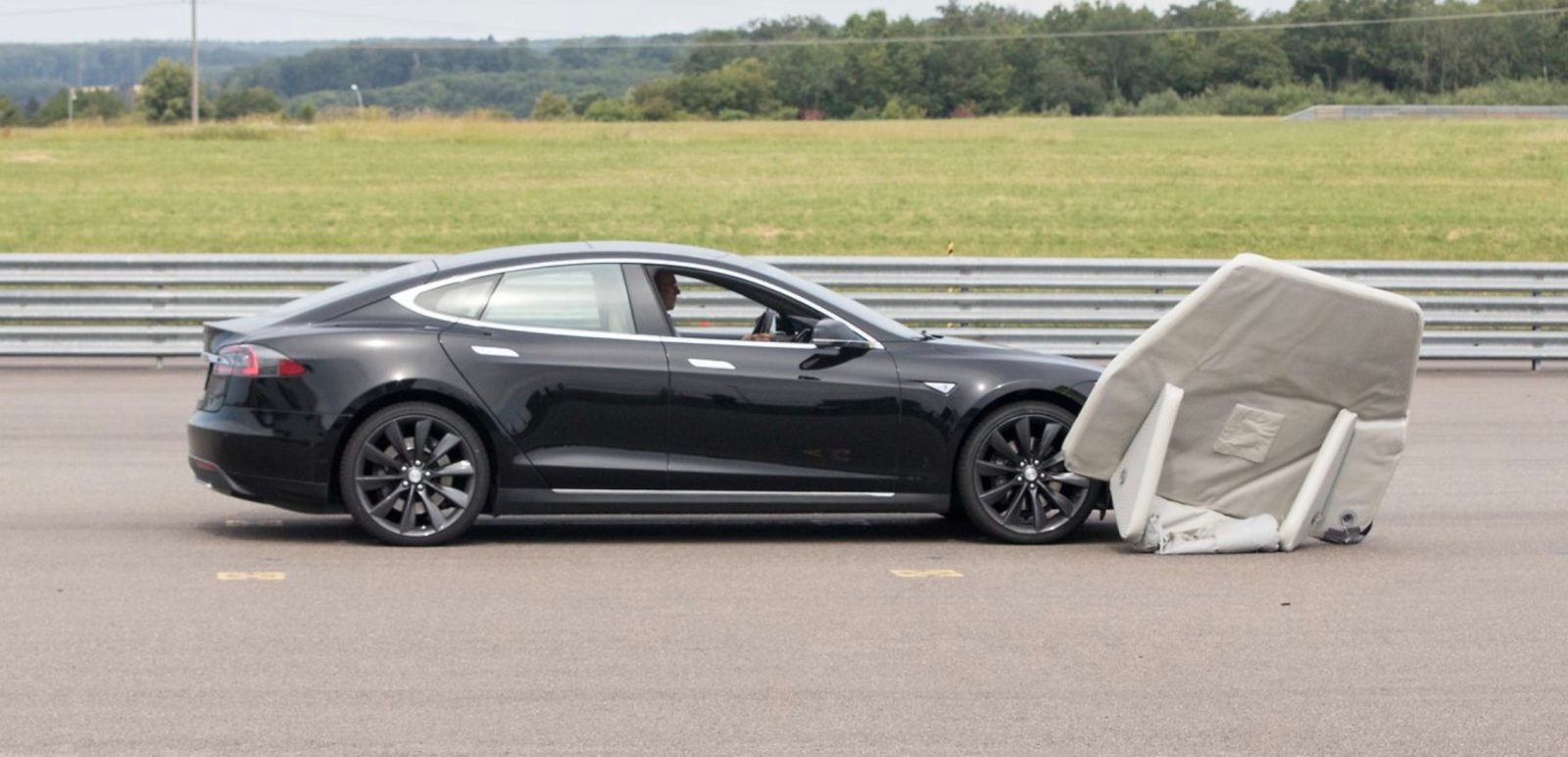
Automatic emergency braking is rapidly becoming a standard feature in new cars and a must-test feature for road authorities.
The Luxembourg testing and standardization authority (ILNAS) did just that with the Tesla Model S and the vehicle failed, but Tesla questions the validity of the test.
ILNAS put a Model S and a Volvo S90 through an emergency braking test.
They invited the media to witness the test and now European media outlets are reporting that the Tesla Model S failed the test.
According to Luxembourg Wort, the Model S ran into the dummy car at 30 km/h while the S90 was able to stop at up to 60 km/h.
The publication released a few images of the test:
We contacted Tesla about the situation and a spokesperson questioned the validity of the test in a statement:
“ILNAS has refused to share the details of the test with us, including the test protocol, and therefore we’ve been unable to confirm that the test is valid or accurate. While we were not consulted by ILNAS in advance and only learned about the test through the media, we have obtained the vehicle identification number of the test car used and see it was built in 2015 and is registered as a rental car in Germany. We will continue to investigate to understand how the test was conducted and if it was done properly.“
A 2015 Model S would be equipped with a first generation Autopilot hardware suite to power its automatic emergency braking feature.
In its own test for the 2016 and 2017 Model S, the IIHS awarded Tesla the highest rating for crash prevention, a “Superior” rating.
Earlier this year, the Tesla Model 3 also received the same rating from IIHS. The Model 3 avoided a crash at 12 mph (19 km/h) and 25 mph (40 km/h) to pass both of the IIHS tests and earn the ‘superior’ rating.
Electrek’s Take
I can understand why Tesla would question the test since there are a bunch of weird circumstances, like why did they do the test in front of the media? That’s not what road safety authorities generally do.
Also, why are they testing a 2015 car in 2018 against a new Volvo?
That said, you want your AEB system to work all the time regardless of how old your car is, but there’s no system that works all the time right now and you can’t rely on it.
Fortunately, Tesla is investigating this and we might get a better understanding.
In its owner’s manual, Tesla says that Emergency Braking is “designed to automatically engage the brakes to reduce the impact of an unavoidable frontal collision with another vehicle” and therefore, drivers should never rely on it to always save them from a crash. For now, nothing beats being vigilant and in control.
Read Again https://electrek.co/2018/07/07/tesla-model-s-fails-auto-braking-test-tesla-questions-validit-test/Bagikan Berita Ini















0 Response to "Tesla Model S fails auto braking test, Tesla questions validity of the test"
Post a Comment